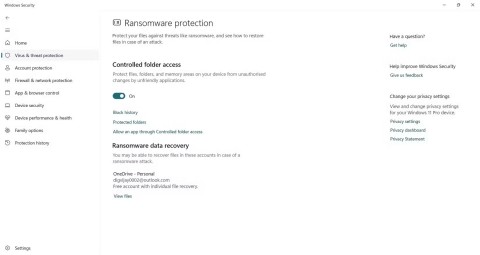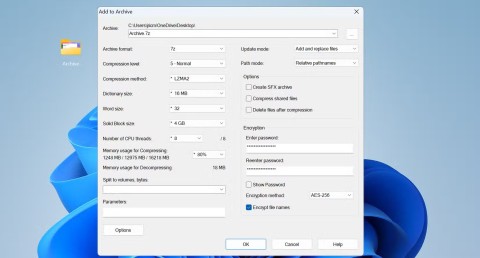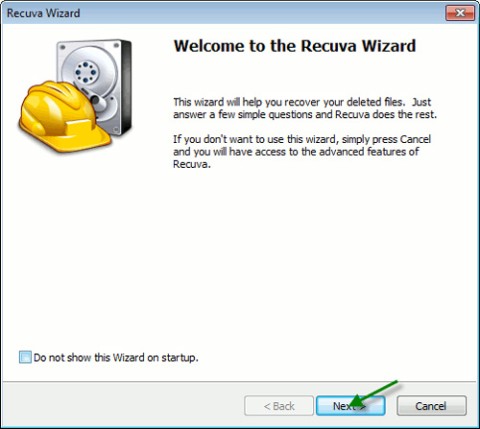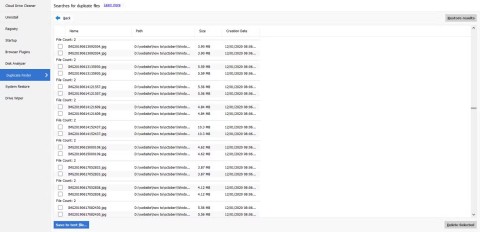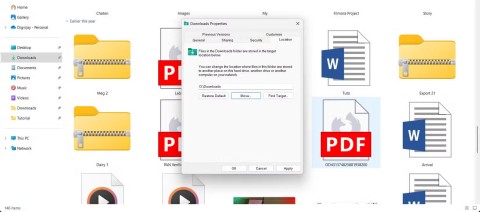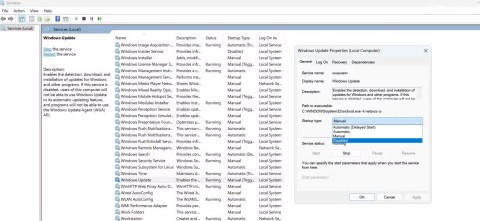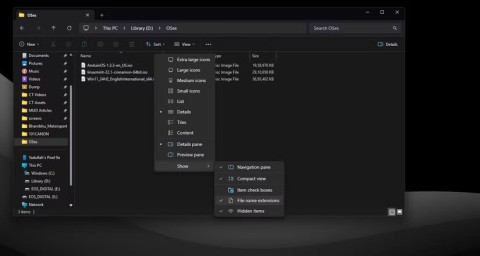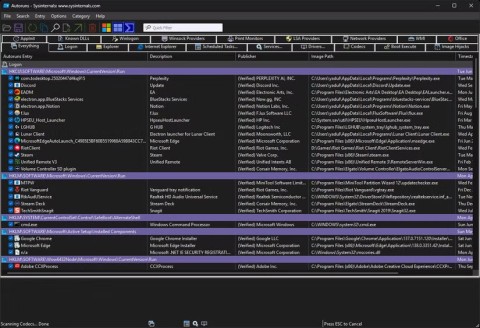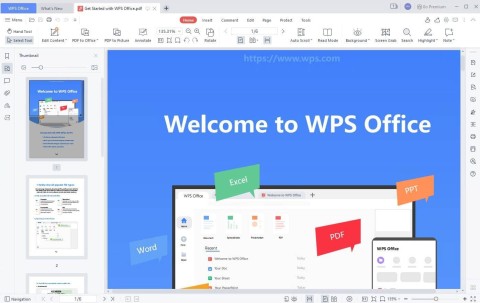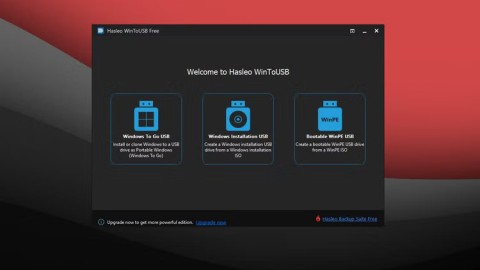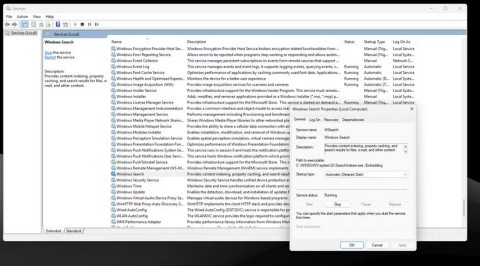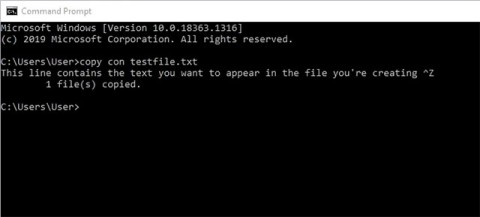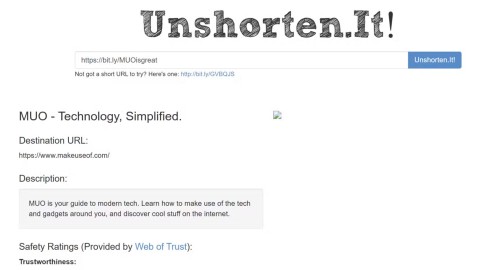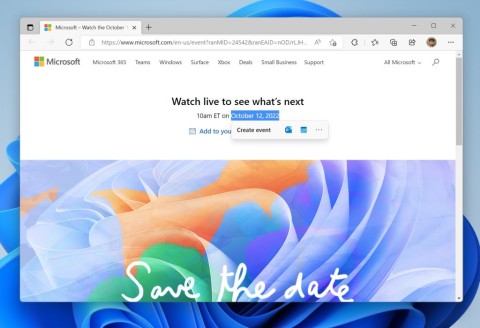Czym jest VPN? Zalety i wady wirtualnej sieci prywatnej VPN

Czym jest VPN, jakie są jego zalety i wady? Omówmy z WebTech360 definicję VPN oraz sposób zastosowania tego modelu i systemu w praktyce.
The cloud is all well and good, but sometimes it’s best to have the security of locally stored emails. Whether you’re running a business, or just want to keep a complete record of your electronic correspondence for other reasons, storing your emails on a hard drive is a good idea – and is relatively simple to do. If you’re using Microsoft Outlook on a Mac or PC, here’s how to save your emails on your hard drive.
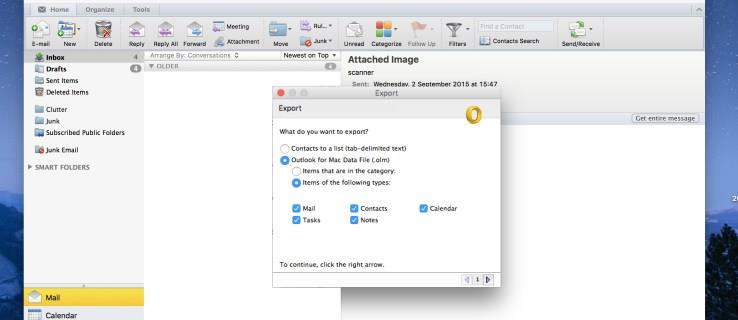
Outlook makes it easy to save your emails, contacts, and much more – and gives you two options of doing it. The first is the easiest, as Outlook bundles everything in an easily generated Personal Storage (.pst) if you’re on Windows, or Outlook for Mac file (.olm) if you’re on an Apple computer. Microsoft Outlook is pretty much the same whether you’re using a Mac or a PC: the only difference is in the type of file exported. Despite that, this tutorial will cover both methods.
How to backup your Outlook emails on a Mac
Backing up your emails from Outlook to your Mac is really simple. All you need to do is follow these steps:
Open the Outlook app on your Mac. At the top, you’ll see a list of options. Click ‘File.’
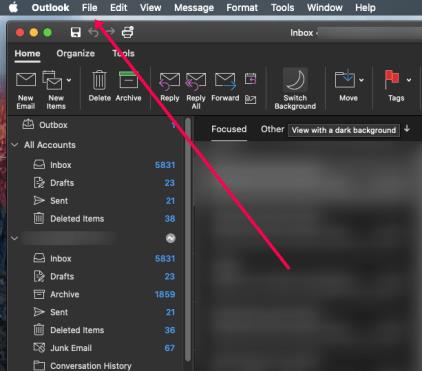
Now, click ‘Export’ from the drop-down list.

A new window will appear asking you which files you’d like to Export, then click ‘Continue.’
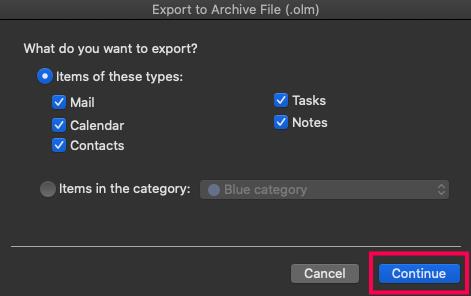
On this page, you’ll get to choose where you want to export the emails to. You can select your Documents, the iCloud, and even your Desktop. Choose the one that best fits your needs.
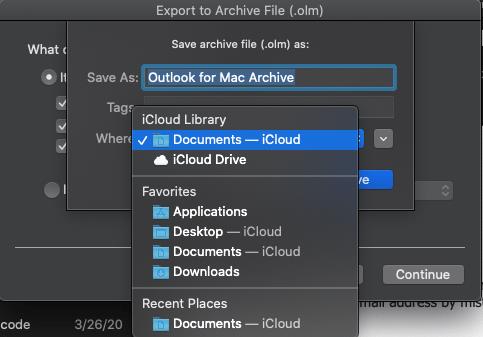
When you’ve made your selection click ‘Continue’ and your emails will be saved exactly where you’d like them to be.
How to backup your Outlook emails on a Windows machine
After booting up Microsoft Outlook, make sure your inbox is completely up to date. That way, your eventual backup will contain as many of your emails as possible.
After clicking on File and then Account information, you’ll then see a window with all your account information.
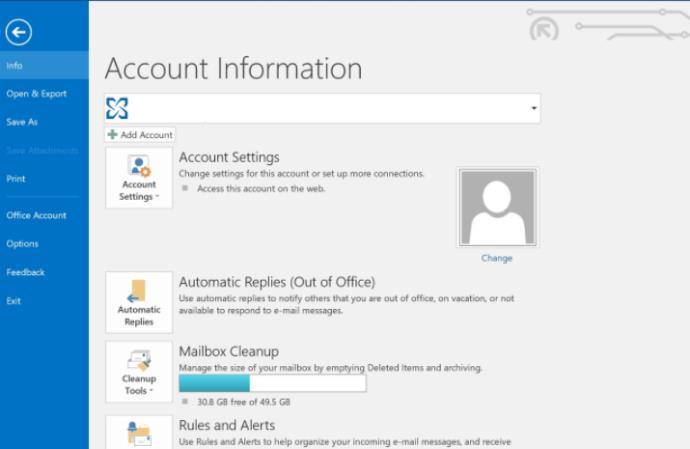
Go to the second tab marked “Open and Export”, and then click on the option for Export. You’ll be given a choice of two files. Make sure you select .pst.
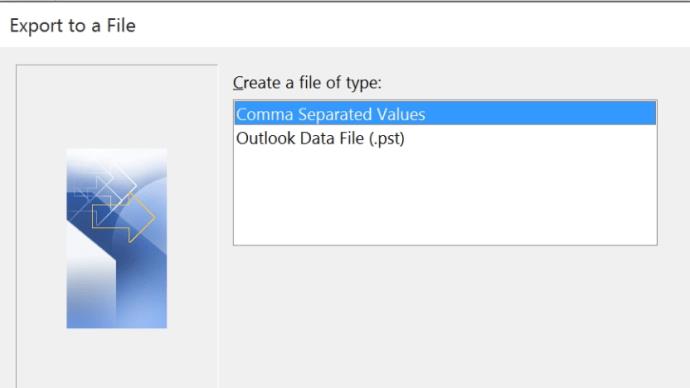
Make sure the file is saved to a location you can easily access and if your emails are extra sensitive, you can also add a password to your .pst file. After that, you’re free to save the file wherever you like, although we’d suggest saving it to your hard drive and, if possible, an external hard drive too.
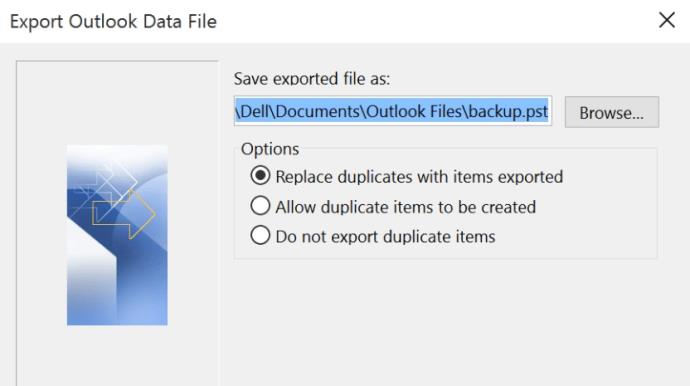
And you’re done! You now have a safe record of your emails. However, it’s important to back-up regularly, that way you’ll lose even less if your Outlook account does go down.
Frequently Asked Questions
Can I save an email from the Outlook Web Client to my Desktop?
Unfortunately no. The option to save an email simply doesn’t exist in the web version of Outlook. There are still things you can do to save precious emails though.
For example, you can forward the email to another client. This will work if you’re trying to save emails before closing your Outlook account. Unfortunately, it will take some time because you’ll have to send the emails one at a time.
If you have one or two emails to save, consider taking screenshots. You can save the emails as images on your computer’s hard drive.
Can I recover emails in Outlook?
If you’ve already lost some emails, you may wonder how you can get them back. The first place to check is the Deleted folder within Outlook. When you accidentally delete an email it will go here first. The deleted email should appear assuming you haven’t emptied it.
Next, check the Archive folder within Outlook. Located in the left-hand panel in the Outlook app, click on ‘Archive’ and search for your email.
Lastly, the Outlook app gives users the option to recover deleted items that are no longer in the Deleted Items folder. Click on the folder and look for the option at the top to recover deleted items. If you still haven’t recovered your deleted emails, there likely isn’t a way to get it back.
Czym jest VPN, jakie są jego zalety i wady? Omówmy z WebTech360 definicję VPN oraz sposób zastosowania tego modelu i systemu w praktyce.
Zabezpieczenia systemu Windows oferują więcej niż tylko ochronę przed podstawowymi wirusami. Chronią przed phishingiem, blokują ransomware i uniemożliwiają uruchamianie złośliwych aplikacji. Jednak te funkcje nie są łatwe do wykrycia – są ukryte za warstwami menu.
Gdy już się tego nauczysz i sam wypróbujesz, odkryjesz, że szyfrowanie jest niezwykle łatwe w użyciu i niezwykle praktyczne w codziennym życiu.
W poniższym artykule przedstawimy podstawowe operacje odzyskiwania usuniętych danych w systemie Windows 7 za pomocą narzędzia Recuva Portable. Dzięki Recuva Portable możesz zapisać dane na dowolnym wygodnym nośniku USB i korzystać z niego w razie potrzeby. Narzędzie jest kompaktowe, proste i łatwe w obsłudze, a ponadto oferuje następujące funkcje:
CCleaner w ciągu kilku minut przeskanuje Twoje urządzenie w poszukiwaniu duplikatów plików i pozwoli Ci zdecydować, które z nich możesz bezpiecznie usunąć.
Przeniesienie folderu Pobrane z dysku C na inny dysk w systemie Windows 11 pomoże zmniejszyć pojemność dysku C i sprawi, że komputer będzie działał płynniej.
Jest to sposób na wzmocnienie i dostosowanie systemu tak, aby aktualizacje odbywały się według Twojego harmonogramu, a nie harmonogramu firmy Microsoft.
Eksplorator plików systemu Windows oferuje wiele opcji zmieniających sposób wyświetlania plików. Być może nie wiesz, że jedna ważna opcja jest domyślnie wyłączona, mimo że ma kluczowe znaczenie dla bezpieczeństwa systemu.
Przy użyciu odpowiednich narzędzi możesz przeskanować swój system i usunąć programy szpiegujące, reklamowe i inne złośliwe programy, które mogą znajdować się w systemie.
Poniżej znajdziesz listę oprogramowania zalecanego przy instalacji nowego komputera, dzięki czemu będziesz mógł wybrać najpotrzebniejsze i najlepsze aplikacje na swoim komputerze!
Przechowywanie całego systemu operacyjnego na pendrive może być bardzo przydatne, zwłaszcza jeśli nie masz laptopa. Nie myśl jednak, że ta funkcja ogranicza się do dystrybucji Linuksa – czas spróbować sklonować instalację systemu Windows.
Wyłączenie kilku z tych usług może znacznie wydłużyć czas pracy baterii, nie wpływając przy tym na codzienne korzystanie z urządzenia.
Ctrl + Z to niezwykle popularna kombinacja klawiszy w systemie Windows. Ctrl + Z pozwala zasadniczo cofać działania we wszystkich obszarach systemu Windows.
Skrócone adresy URL są wygodne w czyszczeniu długich linków, ale jednocześnie ukrywają prawdziwy adres docelowy. Jeśli chcesz uniknąć złośliwego oprogramowania lub phishingu, klikanie w ten link bezmyślnie nie jest rozsądnym wyborem.
Po długim oczekiwaniu pierwsza duża aktualizacja systemu Windows 11 została oficjalnie udostępniona.
